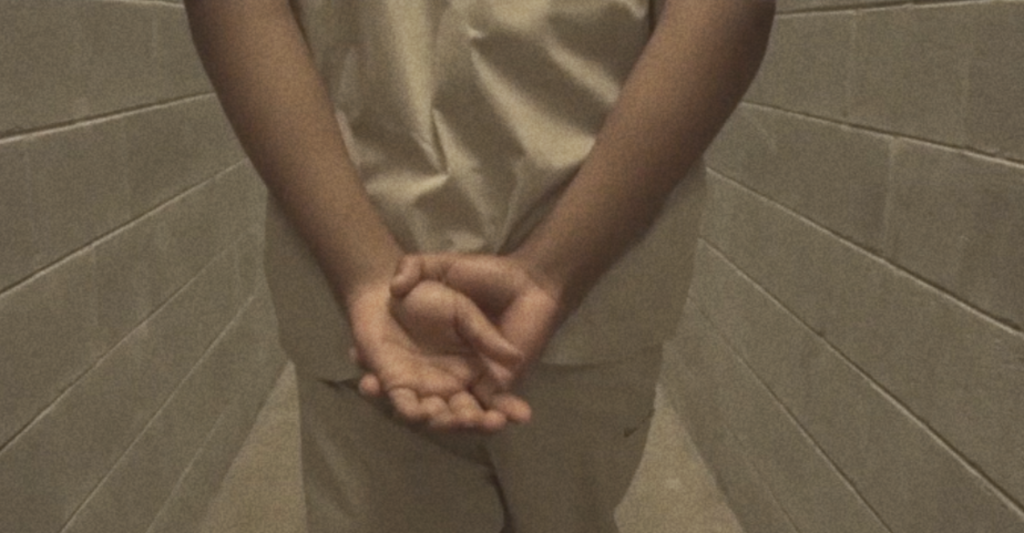The #NoKidsinPrison digital experience is working to reimagine a future without children behind bars.

“It’s been an ongoing system for me,” said Nykia Watkins, a youth leader for Progeny, an organization that works to end youth incarceration.
At the age of 15, Watkins was sentenced to 24 months in prison at the Juvenile Correctional Complex in Topeka, Kansas. “My experience was traumatic; my experience made it to where I didn’t want to ever set foot in another jail,” said Watkins. “But I did, just because of the way that the system was created.”
Watkins’s experience is not unique: 1,995 children are arrested each day in the United States. Throughout the 1990s, the age of mass incarceration offset by the Violent Crime Control Act and Law Enforcement Act of 1994 (better known as the crime bill) caused youth incarceration to increase by 70 percent.
Black children experience incarceration at five times the rate of white children, followed by Native American and Latinx youth who are incarcerated respectively three and nearly two times more than their white counterparts. This disparity is clear to anyone who’s visited a youth detention facility—such as Liz Ryan, the president and CEO of Youth First.
“There’s an overwhelming number of Black and brown young people … who have not committed more serious offenses than white youth,” Ryan said. “It’s just that the system is much more harsh, and tends to incarcerate them [more] and incarcerate them much longer.”
As the U.S. has seen greater awareness of the racist roots of youth imprisonment and increased national attention on police violence against children, the realities of youth incarceration demand a reckoning.
Youth Activists, Abolitionists and Artists
The #NoKidsinPrison digital experience is one initiative working to reimagine a future without children behind bars. The interactive website—launched by Youth First, in partnership with Performing Statistics and Columbia Justice Lab—takes viewers through the history of youth incarceration, the immediate experiences of children who were incarcerated, and current youth activist efforts.
The exhibit is now being brought to the physical world, where two 170-foot banners will soon be displayed at Richmond City Hall in Virginia. Embedded in the banners are links viewers can access from their phones. Digitally, animations of youth activists will play against the clouds, displaying an artistic rendering of a future without youth incarceration.
#NoKidsinPrison was born out of seven and half years of workshops with youth across the country. These sessions were led by lead creative director Mark Strandquist and cultural organizing strategist at Performing Statistics—a national organizing project that uses art to advocate for alternatives to youth incarceration—Kate DeCiccio.
“For me, we use art as both a mirror and a megaphone,” said Strandquist. “It’s a mirror for the young folks we are working with—they’re seeing how powerful their voice can be, and how important their voices are. And it’s a megaphone, because we’re able to use public art, interactive web experiences, to make their voices as loud, as beautiful and as publicly undeniable as possible.”
Youth activists—including Watkins—are leading the fight against youth incarceration in the #NoKidsinPrison experience. Strandquist told Ms. the #NoKidsinPrison experience isn’t necessarily about unearthing trauma but imagining “the world that you deserve, that you and your family and community need to thrive.’”
Biden’s Budget Proposal
In its budget, the Biden administration has proposed $100 million for community-based youth incarceration alternatives, providing an opportunity to concretely advance ending youth imprisonment in the U.S. While the $100 million cannot support the end of all youth incarceration, advocates hope the money will incentivize states to close youth detention facilities and re-invest in community-based programs. Once facilities close, even more funds will be available for community initiatives—for perspective, the cost of incarcerating just one child for one year ranges from $100,000 to $500,000.
“The United States is the world’s largest incarcerator of children. We’re the only country in the world that routinely incarcerates children,” Ryan told Ms. “And when you look at how much we’re spending on that, it’s upwards of $5 billion a year.”
If taken up by Congress, Watkins believes incarcerated youth must be centered in determining what community-based alternatives should look like. “You have to listen to them for what they really want,” said Watkins. “[Legislators] can’t sit up there and just guess and see what we want. That’s not gonna work.”
Take Action to Build a Future Without Incarceration
The #NoKidsinPrison website ends with a vision for the future—a future, according to Watkins, without violence, sirens, cries and fear. There, you’ll find tools to take action: a petition to invest in community-based alternatives to youth incarceration; a curriculum to understand and advocate for decarceration; a network of current justice campaigns; as well as a list of other opportunities to engage in the youth justice movement.
“Young people know what they need to grow and thrive, and we should be investing in what they say will help them,” Ryan tells Ms.
One of the community-based alternatives recommended by formerly incarcerated youth is the establishment of mentorship programs. As Watkins described, “I was teaching myself what was right and what was wrong. And I had to learn from going in and out of jail. Because no one wanted to sit down with me and say, ‘Hey, this is the way of life, this is how it goes.’”
There is further emphasis on making mentors available who have experienced incarceration themselves. “We need guidance, relationships, affirmation and love when we stumble,” said Bryant, whose personal narrative is shared in the #NoKidsinPrison experience.
The prison industrial complex often traps individuals—especially youth and people of color—and effectively revokes their personhood. “The fabric of our society is torn each time a child is not treated like a child and not given the resources and tools they need to overcome and excel,” one mother states in the #NoKidsinPrison experience.
“We want to learn and make things right, but these four walls aren’t the answer,” said Bryant. “We can’t grow up in here.”
Up next:





